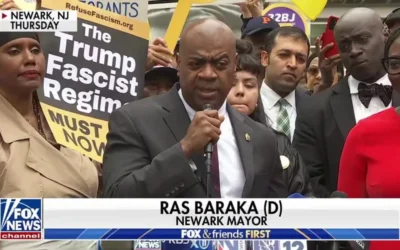Introduction
St. Louis, Missouri is bracing for a string of severe thunderstorms, with the potential for dangerous weather conditions beginning Monday evening and continuing into Tuesday. Just days after a destructive tornado swept through parts of the region, residents are on high alert as meteorological reports indicate a significant risk for severe storms capable of producing strong winds, heavy rainfall, and even hail.
The Aftermath of the Recent Tornado
This past weekend, St. Louis experienced a tornado that left many communities reeling. The aftermath was marked by downed power lines, significant property damage, and a heightened sense of anxiety among residents. Recovery efforts are ongoing, with emergency teams still working to restore essential services, which only complicates the new threat of severe weather on the horizon.
Weather Impact Alert: What to Expect
The National Weather Service has issued a Weather Impact Alert due to the impending storms that are expected to develop across the region on Monday afternoon. Forecast models indicate that the storms could arrive by the evening, bringing with them the possibility of:
- High Winds: Sustained winds up to 70 mph are possible, which could exacerbate the damage already caused by the tornado.
- Heavy Rainfall: Accumulations of 1-2 inches of rain could lead to localized flooding.
- Hail: The storms have a potential to produce hail of varying sizes, posing threats to vehicles and property.
- Possible Tornadoes: Within supercell storms, additional tornadoes may develop, presenting a serious risk to safety.
Preparation is Key
With the storms expected to hit on Monday night, St. Louis residents are urged to take the necessary precautions to stay safe. Here are some critical safety tips:
- Stay Informed: Regularly check local news channels and weather apps for updates and alerts.
- Create an Emergency Kit: Ensure that your emergency kit is stocked with essentials such as water, non-perishable food, flashlights, batteries, and first-aid supplies.
- Have a Plan: Discuss a family emergency plan that includes a designated meeting point and communication strategies.
- Secure Property: Check outdoor items such as patio furniture and grills, bringing them inside or securing them to prevent them from becoming projectiles.
On the Ground: Preparing for Storm Tracking
Local meteorologists are engaged in a collaborative effort to track the development of these storms throughout Monday. Meteorologists advise residents to remain in ‘Storm Mode’ throughout the duration of the event. This means keeping a weather radio or app handy, and being ready to also implement safety plans as needed.
Community Response and Resources
The City of St. Louis encourages all residents to act responsibly and stay informed. Several resources are being made available, including real-time updates through local media and the city’s official website. Emergency management teams are implementing additional measures, including:
- Setting up emergency response teams on standby
- Pre-positioning supplies for quick distribution if necessary
- Creating temporary shelters in case of widespread power outages or severe damage
Staying Calm Amidst Chaos
While the forecast is indeed alarming, officials stress the importance of remaining calm. Panic does not lead to good decisions. By staying informed and following safety protocols, the risks associated with severe weather can be significantly mitigated.
The Role of Technology in Storm Preparedness
In recent years, advancements in technology have improved the way severe weather is forecasted and communicated to the public. Social media platforms provide instant updates, while weather apps use GPS tracking to alert users in specific areas about impending storms. These tools are particularly vital in urban environments like St. Louis, where rapid changes in weather can impact large populations in a short timeframe.
Looking Ahead: Long-Term Weather Trends
As climate change continues to alter weather patterns, meteorologists anticipate that the frequency and severity of storms will increase. St. Louis, along with many Midwestern cities, must adapt to these changes, preparing not only for immediate threats but also for the long-term implications of a changing climate.
Tools and engineering solutions to manage stormwater effectively—such as green infrastructure, improved drainage systems, and flood prevention measures—require collaborative efforts from government officials, city planners, and residents alike.
Conclusion
As St. Louis faces another round of severe weather threats, the resilience of the community will be put to the test once again. Preparedness, vigilance, and cooperation among residents and officials will be essential in mitigating the impact of the storms. With the right precautions in place, the people of St. Louis can navigate the risks ahead, ensuring their safety and well-being during this tumultuous time.







